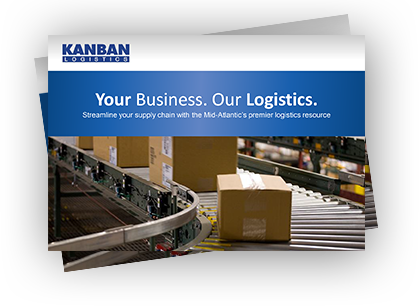Your products need warehousing for storage and distribution. But ‘warehousing’ is a broad term with many different definitions. In this article, we’ll take a closer look at one type of warehousing as we answer the question, “what is contract warehousing?”
Contract Warehousing
 In terms of services offered by third-party logistics (3PL) companies, there are two basic types of warehousing: shared and contract.
In terms of services offered by third-party logistics (3PL) companies, there are two basic types of warehousing: shared and contract.
With shared (or “public”) warehousing, the warehouse space and the 3PL provider’s resources are split among many warehouse ‘tenants.’ This model is flexible in that companies can use more or less space and resources as their needs change. The pricing is flexible as well, as companies only pay for the space and services they use. The total warehousing costs are then variable, and ‘shared’ across the warehouse tenants.
With contract (or “dedicated”) warehousing, the warehouse space and resources are fixed – as are the costs. The tenant company is committing to the fixed space and resources for the duration of the contract (these contracts typically cover years, while shared contracts may cover months).
There are a few basic contract warehousing models:
- The 3PL owns the warehouse and dedicates the entire facility (or part of the facility) – and the necessary resources – to the operations of the tenant company
- The 3PL owns the warehouse and the tenant company runs all operations within it by itself, without the 3PL’s equipment and associates
- A company owns or leases a warehouse and hires a 3PL to staff it and run all operations within
Contract warehousing can also apply to just part of a warehouse. For example, a company may commit to a contract warehousing arrangement for 50,000 square feet out of a 150,000-square-foot warehouse. The 3PL can use the rest of the space for shared warehousing or even other contract arrangements (it is not uncommon for a single warehouse to be broken up into multiple contract operations).
What types of companies are good fits for contract warehousing?
There are a number of factors that can help determine whether an operation is a better fit for shared or contract warehousing. For instance, if a company’s sales volumes fluctuate substantially (e.g., it needs much more space and resources near the holidays than it does the rest of the year), then shared warehousing is likely a better fit.
If, however, the volumes are consistent throughout the year so that resources are not underutilized – and substantial enough to warrant the space – then contract warehousing may be the best, most economical, choice.
Not surprisingly, however, the decision will ultimately come down to costs. Contract warehousing is attractive to companies that like the predictability of a set contracted rate for their operations instead of the fluctuating rates associated with shared warehousing. Additionally, companies with operations large enough to warrant their own facilities may prefer to contract with a 3PL that owns a building because there’s less risk involved (it’s relatively easy to change 3PLs, much more difficult to sell a warehouse that you own).
What to look for in a contract warehousing provider
Contract warehousing is a partnership. As with any partnership, you want to feel that you’ll be happy with your partner before you sign on the dotted line. This means getting to know your 3PL partner: touring the facility, meeting with leadership and associates (the people actually running your operations) and talking to other customers.
From there, the things you need to look for are not all that different from shared warehousing providers. Some examples include:
Warehouse management system (WMS): you want to make sure that your 3PL partner has a robust WMS that can manage your inventory, orders, and reporting the way you want them managed. (NOTE: some contracting warehousing arrangements involve 3PL use of the customer’s WMS.)
Temperature-controlled capabilities: if your products have temperature- or climate-related needs, you want to make sure your 3PL partner can protect product integrity within the warehouse.
Strategic location: you want to choose a 3PL with a location that enables fast distribution to your customers – whether retailers, manufacturers, or eCommerce customers.
Learn more about Kanban Logistics’ contract warehousing capabilities
Whether you’re looking for shared or contract warehousing on the East Coast, Kanban has got you covered. We have over 1 million square feet of warehousing space in Eastern North Carolina – with the ability to add more to meet customer needs. In fact, we have a shovel-ready location with a pad already in place in Rocky Mount, NC to support a 175,000+-square-foot facility. To learn more about this opportunity as well as Kanban’s existing warehousing capabilities, contact us today.
Never Miss a Blog Post
Join our email list to receive new posts in your inbox. We will never spam you. Opt out anytime.
Blog Post Categories
- Outsourcing 3PL (72)
- Warehousing (72)
- North Carolina (52)
- east coast logistics (47)
- manufacturing logistics (26)
- Food Logistics (19)
- Fulfillment (18)
- CSX Carolina Connector (17)
- Miscellaneous (14)
- Free Trade Zone (FTZ) (12)
- FTZ / Free Trade Zones (11)
- Intermodal (11)
- Rail Siding (11)
- Port of Virginia (10)
- Cross Docking (7)
- Kitting (5)
- Aerospace (3)
- Pharmaceutical (3)
- Kanban News (2)
- QVC Rework Services (2)
- COO (1)
- container yard services (1)
- flexible (1)
- operations (1)
- scale (1)
- scott freeman (1)






